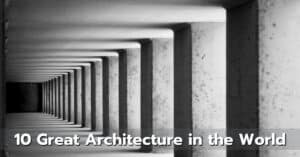For a long time, the architecture of a building has been closely related to its environment and location. But in the last few decades, people are starting to see that the architectural look of a building can have an important impact on human behavior. Some architects are trying to apply their knowledge of psychology in building design, while others are building places to bring people together. In this article, I will share the 10 best examples of such buildings.
A well-designed building is a beautiful thing, but there’s more to it than that.
The world is full of amazing architectural masterpieces that inspire us. But for many, these impressive buildings only exist in the imagination. Fortunately, we’ve collected a list of 10 of the most amazing, unusual, and innovative buildings ever constructed. Whether you’re into modern or contemporary architecture, you’ll love our list of the 10 best architectural wonders from around the world.
From skyscrapers to public parks, the world is a fascinating place. And, as architecture and landscape design goes, it’s also a great place to visit. Here are the best 10 places to see.
1. The Sydney Opera House
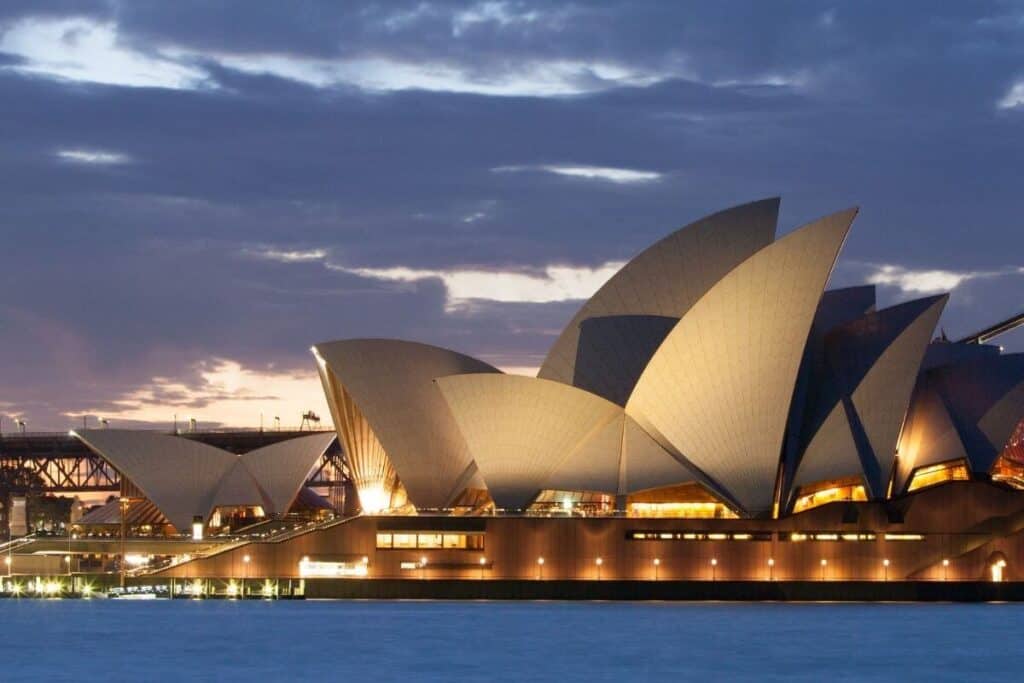
The Sydney Opera House is one of the great architecture and most beautiful buildings in the world and is located in the city of Sydney, Australia. It was designed by Danish architect Jørn Utzon, who won the competition in 1957, to be a modern, dynamic structure, which would represent the future and become a symbol of the city of Sydney. The project took a little over eight years to complete, and it opened in 1973.
It has many rooms and is located on Bennelong Point. The Sydney Opera House is a symbol of Sydney because it is unique. People from around the world come to see it. The building was designed to be an example of modern architecture. The Sydney Opera House consists of three major parts. The first part is the main auditorium, where the shows take place. The second part is the foyer, which is where people can have a drink or go to the bathroom. The third part is the tower. It is a glass dome that stands over the main auditorium. It was designed to show the beauty of Sydney.
The Sydney Opera House is utilized as a concert hall, a theatre, and an exhibition space. It was built as part of the cultural and recreational facilities of the Sydney Harbor Foreshore Authority in Sydney Harbor. Its design is inspired by the Sydney Harbor Bridge, and its main features are its cantilever form and its steel skin, which is covered with copper.
The Sydney Opera House’s main architectural features include the use of natural materials and innovative technological solutions. The roof is covered with copper, which reflects the sun and helps to keep the building cool. The roof is also designed to be used as an acoustic membrane.
The Sydney Opera House has been designed to look like an ark, so it has a curved facade, which is covered in grasses, and its interior is decorated with light colors. The building is located on Bennelong Point on the western end of Sydney Harbor. It is open to the public from 11:30 a.m. to 7:00 p.m. daily, but during the summer months, it is open until 9:00 p.m.
2. The Eiffel Tower

The Eiffel Tower is one of the great architecture and most recognizable structures on the planet, even if you don’t speak French. Its fame is due to its design, which consists of two main components: the lattice steelwork and the iron structure. It’s this architecture of the Eiffel Tower that made it possible for the designers to achieve the structural stability they needed.
Following this, the Eiffel Tower is one of the most iconic and recognizable buildings in the world. It is also the tallest building in Paris. It is the third-tallest free-standing structure in the world. The tower was designed by Gustave Eiffel, a French civil engineer, and architect. He wanted to create a tower that was both beautiful and functional.
The Eiffel Tower is a symbol of French culture and ingenuity. On one level, the Eiffel Tower is simply the tallest building in the world, and at 454 meters, it is the tallest in France. But more importantly, the Eiffel Tower is a building of engineering and construction. The French architect Gustave Eiffel designed the tower in 1887, and it was built by a team of 500 men, each of whom earned a day’s pay for working on the tower. The tower took four years to build and three weeks of that time was spent in the midst of a storm. It was difficult and dangerous work.
The Eiffel Tower is located at the Champ de Mars in the 7th arrondissement. It is accessible by Metro Line No. 1 and the Métro. To reach the Eiffel Tower, you need to take the RER (Regional Express Train) train to Châtelet – Les Halles, which is just a few minutes away from the Eiffel Tower. You can get there easily by bus or taxi. If you are interested, I suggest you see the Eiffel Tower and get to know it better. You will be sure to love it.
3. The Great Wall of China
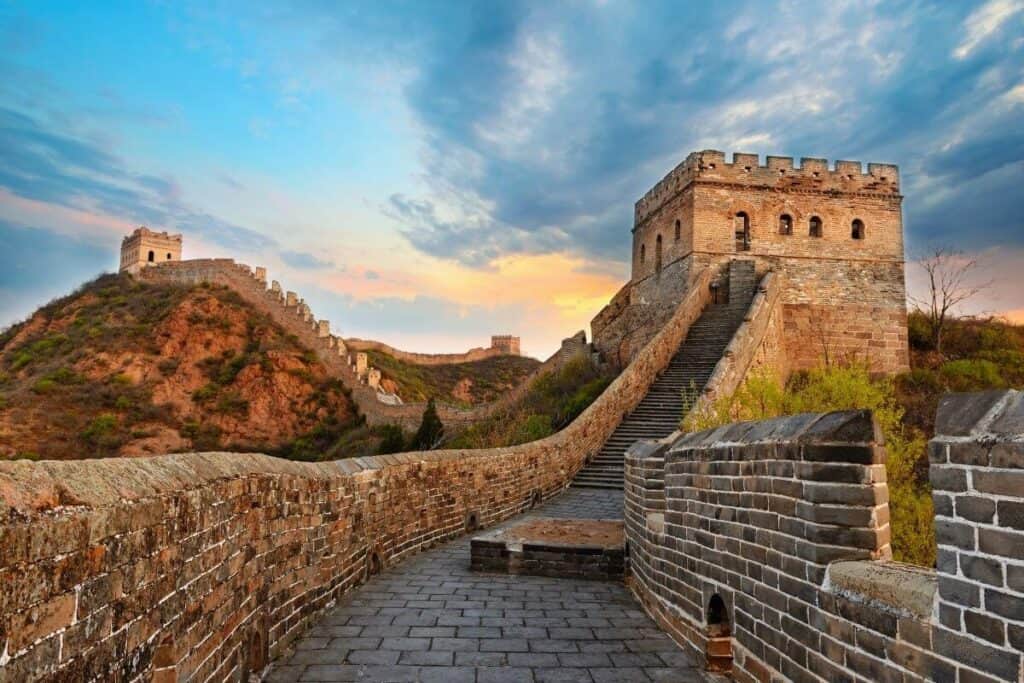
The Great Wall of China is one of the great architectures and largest construction projects in human history. It began in 220 BC and took about fifteen years to complete, in the reign of the emperor Qin Shi Huang, who wanted to defend the borders of China from the barbarian kingdoms of the north. It has since become a symbol of China’s national pride. Its original design was inspired by earlier walls built by the Qin dynasty, but during the construction of the wall, the emperor’s men found that they needed a more solid wall than those they had constructed before. They discovered that by using stone and bricks instead of mud-brick, the wall would be strong enough to hold back the enemy armies.
The Great Wall of China is one of the world’s largest construction projects. With over 6,000 km of stone wall, the Great Wall of China was built to defend China from the Mongols. The project started in the 13th century, when the Mongol Empire invaded the Chinese territory. This was a period of political turmoil for China. It was in dire need of a defense system. After a period of 10 years, the project was completed, in 1271. The project took around 60 years to complete.
You’re probably familiar with the story of how the Chinese built The Great Wall, but you may not know much about the actual process. Here’s the general idea behind the design and construction: the Chinese had to find a solution to their problems with invaders coming across the border from Central Asia. The easiest way to stop these invaders was to build a barrier between them and the Chinese, thus preventing the invaders from advancing. To prevent the invaders from getting over the wall, the Chinese needed to make the wall at least 8 feet high. They would have had to do this by digging a trench at least 30 feet wide, then building a wall along the trench, and then filling in the trench. The wall would have been about 7,000 miles long if you were to go all the way around China.
4. The Taj Mahal

The Taj Mahal is perhaps one of the most famous structures in the world and is often cited as a masterpiece. The building is a monument of the Indian empire’s Mughal rulers, which was built in the 16th century. At the time, it was the largest and most costly mausoleum in the world. Today, the structure still serves as a monument to the glory of the Mughal empire, although the mausoleum was never completed.
The Taj Mahal is a great example of how a masterpiece of architecture can be based on a functional principle. In fact, the building is so well-engineered that it stands up to natural disasters without major damage. Taj Mahal’s designers, the Mughal Emperor Shah Jahan and his wife, Mumtaz Mahal, had a strong respect for nature and its laws. Therefore, the Taj Mahal has a strong base with a large base of solid pillars. It has two layers of stones, including masonry stones and rubble stones, in the bottom layer to create a stable structure.
The building is made up of different materials that are carefully chosen to match the local climate. For instance, the Taj Mahal uses marble from Mount Abu, which is very hot and dry, while the foundation is built from local stone to provide stability in the wet weather of Agra. The building also uses white marble to symbolize purity, while red marble is used for the main entrance. The building also uses brick for its exterior walls to protect the building from rain and snow. The building is also surrounded by a moat to keep water away from the building. In addition to the materials, the building is designed with a strong base. The Taj Mahal uses pillars to support its structure, which helps to maintain its stability. As a result, the Taj Mahal can stand up to natural disasters such as earthquakes and floods. In fact, the building was constructed during a period when the Mughal Empire was expanding in many parts of the world. The Taj Mahal was built to last for centuries and to serve as a monument to the glory of the Mughal empire. The Taj Mahal is not only a beautiful piece of architecture but also a functional building. It serves as an example of how a masterpiece of architecture can be based on a functional principle.
The History of the Taj Mahal The Taj Mahal was built by the Mughal emperor Shah Jahan, who ruled the Mughal Empire from 1628 until his death in 1666. At the time, the Mughal Empire was expanding in many parts of the world. The Mughals were famous for their architecture, which included many amazing buildings. Shah Jahan wanted to create a mausoleum that was not only beautiful but also functional. The structure was completed in 1653 after a period of about 30 years of construction. The Taj Mahal is a great example of how a masterpiece of architecture can be based on a functional principle. In fact, the building is so well-engineered that it stands up to natural disasters without major damage. Taj Mahal’s designers, the Mughal Emperor Shah Jahan and his wife, Mumtaz Mahal, had a strong respect for nature and its laws.
5. The Colosseum

The Colosseum was built to be a venue for entertainment and a place of worship, but its primary purpose was to allow the public to see the brutality of the Roman Empire and how it controlled its citizens. The Roman Empire was known for its cruel and violent methods of punishment. They also enjoyed gladiatorial combat. Gladiators were prisoners who fought each other to the death for entertainment and profit. Some of the gladiator games were for public audiences, others for special events such as birthdays or holidays.
The Colosseum was designed and built in just under one year. Architect Vespasiano, a pupil of Vitruvius, had to design a building to impress and intimidate the populace. He had a lot of leeways, but he also needed a solid plan. The project was done in three phases: the first phase of the construction, the second phase of the construction, and the final phase of the construction.
The construction was finished in about 80 AD. It is estimated that over 5 million people saw the gladiator games at the Colosseum. Construction Phase 1: The First Phase of Construction The first phase of construction began in March of 70 AD. This phase lasted only four months. The Roman Empire did not have much money, so they used the spoils of war. They took some of the materials from the nearby city of Capua. The stone was taken from the Roman temples in Capua. They also took marble and other materials from the nearby area. The Colosseum was built by slaves. They worked for no pay. They were given food and shelter but they could not leave. They had to work from sunrise to sunset. The slaves worked for as little as sixpence a day. Some were even forced to do this work. The workers were not treated well. They had to work under constant supervision. The Colosseum was a large construction site. There were no building codes in place to protect the workers. There were no regulations to ensure the safety of the workers. Many of the slaves were chained and whipped by their masters. If a slave ran away, they were punished and often killed. The Colosseum was a huge undertaking. It was one of the largest structures built in ancient Rome. The Colosseum was built with concrete. This is a very strong material. It was also built on a platform that was at least 16 feet high. The foundation for the Colosseum was a series of arches that were filled with concrete. The arches were made out of stone. The arches were connected with a series of pillars that held up the weight of the structure. The arches were all made out of concrete. They had large openings to allow light into the interior of the building. The Colosseum was built in a circular shape. It was built on a platform that was 16 feet high. The arena was oval-shaped and was built on a platform. There was a wall around the entire structure. This was so that people could not climb over it.
6. The Great Pyramid at Giza

At the heart of the Great Pyramid at Giza, Egypt was a secret chamber where the pharaoh was entombed and buried. The ancient Egyptians believed that the pharaoh was the living spirit of the land, which was manifested through the physical body of the king. The room was located at the highest point of the pyramid. The pyramid was designed so that it could be built with a series of smaller pyramids stacked on top of each other. Each pyramid was built one level at a time. The room in the center of the pyramid was for the pharaoh’s burial.
To understand the true architecture of the great pyramid at Giza, one must understand the relationship between its different layers, the relationship between the pyramid and the land it is built upon, and the function of each layer. The first layer is the limestone bedrock that the pyramid was built upon. It provided the necessary support to hold up the whole structure. The second layer is the core of the pyramid. It provides the structural strength and solidity of the pyramid. The core is a square-shaped stone block, and it’s the only stone that is not made from limestone. The third layer is the casing of the pyramid. It is a limestone casing that encases the core and holds the core and the other stones together. The fourth layer is the outer casing of the pyramid. It also is a limestone casing and is used to protect the pyramid from erosion. It also holds the pyramid up and keeps the rainwater from getting inside and damaging the pyramid. The fifth layer is the top of the pyramid. It is the apex of the pyramid. It is made of granite. The sixth layer is the capstone. It is placed on top of the pyramid. It is the final layer that gives the pyramid its name.
The Great Pyramid at Giza is a true work of architecture and engineering. The pharaohs were the architects and engineers of their own tombs. They built it by using the natural laws of gravity and the weight of the stone to build the structure. They used the same principles of physics and the laws of geometry to design and build their pyramids.
The Great Pyramid was built in two stages. The first stage was completed by Khufu, who reigned from 2589-2566 B.C. The second stage was completed by his son Khafre, who reigned from 2566-2558 B.C.
The first stage of the great pyramid at Giza was completed in four years. It took the workers one year to move the limestone from the quarry to the building site. Once the stones arrived at the building site they were moved to the pyramid in baskets on a barge. The second stage of the pyramid was completed in 20 years. This was done in three phases. The first phase was completed in five years.
The second phase lasted seven years. The third and final phase took five years. During the second phase of the great pyramid, the workers constructed an inner chamber. This chamber was about 26 feet square and was located at the highest point of the pyramid. The chamber was used as a resting place for the pharaoh’s body during his burial. The Great Pyramid at Giza was designed to last forever. The outer casing of the pyramid was made of limestone.
It was made by using a method called dry stone construction. This method is where the stones are piled on top of each other and then the capstone is placed on top of the pyramid. The outer casing was designed to be able to withstand erosion. The outer casing was built with a series of layers, which were made of limestone and granite. The outer casing was designed so that the rainwater would not get inside and damage the pyramid. The outer casing also held up the pyramid from the weight of the pyramid’s core and the capstone. The second layer of the great pyramid was its core. It provided the strength and stability of the pyramid. It was a square-shaped stone block that was made of limestone. It provided the strength of the pyramid. The core was the most important layer of the pyramid. It provided support and structural stability for the whole pyramid. The core also provided the inner chamber of the pyramid. The inner chamber was located at the highest point of the pyramid.
It was a cubical room with a height of 26 feet and a width of 26 feet. It was used as a resting place for the pharaoh’s body during his burial. The third layer of the great pyramid at Giza was the casing of the pyramid. It was made of limestone. It was designed to protect the pyramid from erosion. It also held up the pyramid from the weight of the pyramid’s core and capstone. The casing was built in two layers. The first layer was made of limestone. It was built by using dry stone construction. The second layer was made of granite. It was built in three phases. The first phase was completed in five years. The second phase lasted seven years. The third and final phase took five years. During the second phase of the great pyramid, the workers constructed an inner chamber. This chamber was about 26 feet square and was located at the highest point of the pyramid. The chamber was used as a resting place for the pharaoh’s body during his burial. The fourth layer of the great pyramid at Giza was its outer casing. It was made of limestone. It was designed to protect the pyramid from erosion. It also held up the pyramid from the weight of the pyramid’s core and capstone.
7. The Temple of Artemis
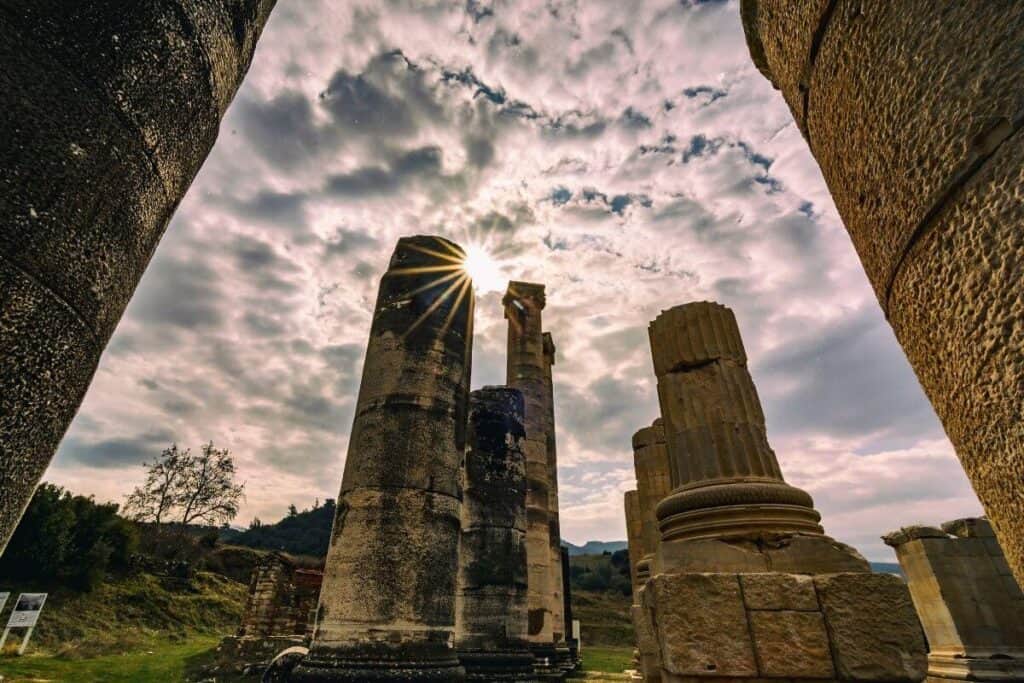
The Temple of Artemis was built in the 5th century B.C.E. and stands as one of the Seven Wonders of the Ancient World. The temple was originally constructed to honor the goddess, Artemis, and was designed by King Cassander of Macedonia. However, in the 2nd century C.E., it was used as a fortress. Eventually, the temple fell into disrepair. Then, in the 15th century, it was destroyed by the Ottoman Turks. Today, the Temple of Artemis can be found in the Acropolis of Athens, Greece.
Construction The Temple of Artemis was built during the 5th century B.C.E. in the city of Ephesus, Turkey. The original purpose of the temple was to honor the goddess Artemis. This temple was one of the Seven Wonders of the Ancient World. During the reign of King Cassander of Macedonia, the temple was constructed in honor of the goddess Artemis. However, in the 2nd century C.E., it was used as a fortress. Eventually, the temple fell into disrepair. Then, in the 15th century, it was destroyed by the Ottoman Turks. According to Pausanias, the foundation of the temple was laid in the mid-5th century B.C.E. By that time, the area had been inhabited for at least 4,000 years. In the 1st century B.C.E., Ephesus was known as the “Queen of Cities.” Its wealth was derived from its export of silver, lead, and wool. The Temple of Artemis was built on a hill, which was surrounded by a wall. The hill was shaped like a ship, with the temple at its prow. The building was made of marble and covered a total area of approximately.
The temple itself was decorated with marble columns and statues of gods and goddesses. The temple itself was constructed in the Corinthian style. It was constructed of limestone blocks, which were covered in stucco and painted in bright colors. The temple was also surrounded by a portico, which was made of white marble. The temple’s doors were decorated with statues of Artemis and Apollo. There were two towers at each corner of the temple. The temple’s roof was supported by a series of arches, which held up the roof’s wooden beams. Inside, there were statues of Artemis, Zeus, and Athena. There was also a large statue of the goddess Artemis herself. This statue stood in the center of the temple. In the 15th century, it was destroyed by the Ottoman Turks. Today, the Temple of Artemis can be found in the Acropolis of Athens, Greece.
8. St. Peter’s Basilica
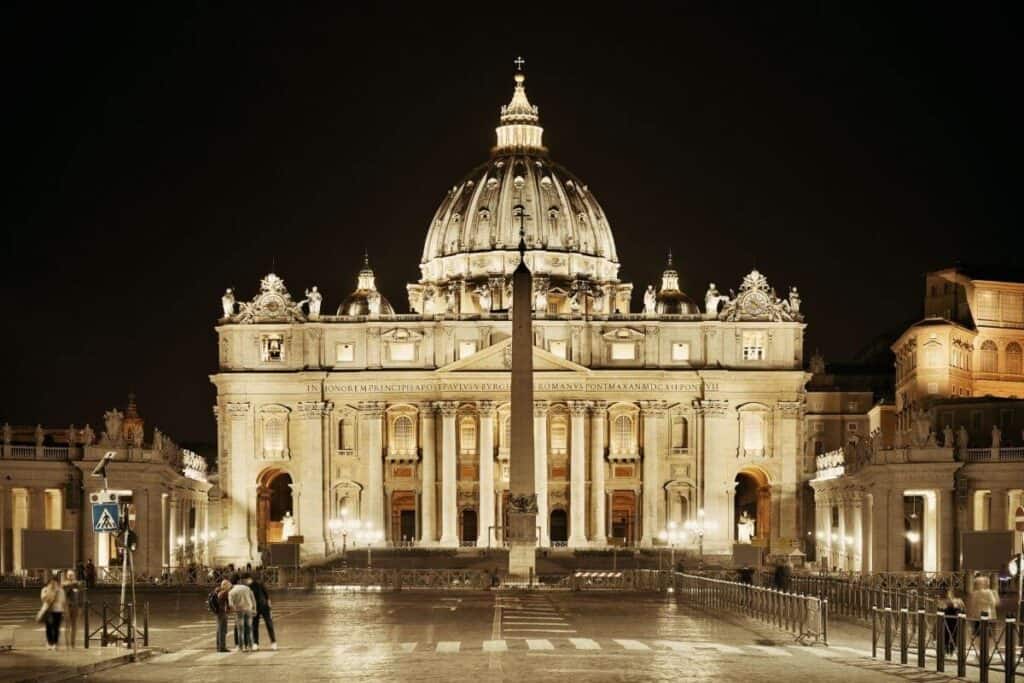
The St. Peter’s Basilica in Rome, Italy, was designed by Michelangelo. As the third of the seven great basilicas of Rome, it was completed in 1626. The basilica has three sections: the nave, the main space; the aisles, which extend along the sides of the nave; and the transept, a smaller section across from the nave that is surrounded by the aisles. The nave is the main space of the basilica. The columns that run down its length are made of red brick, while those along the aisles are of white marble.
At first glance, the design of the Basilica of St. Peter seems like a very straightforward building. The basilica is a massive church, built over many years, on a large piece of real estate. There are three entrances on the front side of the building. The main door, however, is located on the backside of the building, where the nave of the church begins. It is here where you enter the church.
The St. Peter’s Basilica in Rome, Italy, was designed by Michelangelo. As the third of the seven great basilicas of Rome, it was completed in 1626. The basilica has three sections: the nave, the main space; the aisles, which extend along the sides of the nave; and the transept, a smaller section across from the nave that is surrounded by the aisles. The nave is the main space of the basilica. The columns that run down its length are made of red brick, while those along the aisles are of white marble.
At first glance, the design of the Basilica of St. Peter seems like a very straightforward building. The basilica is a massive church, built over many years, on a large piece of real estate. There are three entrances on the front side of the building. The main door, however, is located on the backside of the building, where the nave of the church begins. It is here where you enter the church.
In the 1730s, the interior of the church was decorated by the Bernini. The most interesting feature of the basilica is the dome, which is covered with a series of bronze panels. These panels, known as the Baldacchino, are designed by Bernini. The Baldacchino was added to the church in 1631 and was designed to cover the dome of the church. It stands 18 meters high and is made of more than 2,000 pounds of bronze. It contains more than 4,500 square meters of fabric. The dome, which has a diameter of 44 meters, is supported by a system of eight arches. Each arch is made of two half-domes. These half-domes are joined at their tops by a crossbeam. There are 12 of these crossbeams on the dome. As you can see, there are many features of this basilica that are unique to this structure. You’ll find the dome and the basilica’s architecture is very interesting. The dome and the building itself are both very large. This is one of the reasons why the basilica is so popular. If you are looking for a large, interesting church in Rome, you should visit the Basilica of St. Peter.
9. The Vatican City

The Vatican City, located between Rome and the Swiss Alps, is one of the smallest countries in the world with a population of under 400,000. It was built in a swampy area that was prone to flooding. Pope Francis decided to build a new city on this land. His choice was the Castel Sant’Angelo, a former prison, which sits on the banks of the Tiber River and is the main tourist attraction of Vatican City.
The architecture of the Vatican City was conceived by Gian Lorenzo Bernini in 1644. He wanted a place where he could pray. The plan is simple. The building is divided into three parts: the Vatican Palace, the Basilica of St. Peter, and the Lateran Palace. This structure is based on the ancient Roman concept of a piazza. Piazza is a large square surrounded by buildings, with the church in the center. It was meant to be a place of worship.
The Vatican Palace was originally built as an imperial residence for the popes. In fact, it was built in the 1st century AD and was used until the Middle Ages. It has been used for the residence of the pope since then. The palace is located on the north side of the Castel Sant’Angelo. The front of the palace is facing the Tiber River. It has seven courtyards, and the central courtyard is the largest. Following this, the Vatican Gardens are located at the back of the palace. They were designed by Michelangelo and there are two pools in this garden: the Piazza del Giardino and the Ponte Sant’ Angelo.
10. The Hagia Sophia
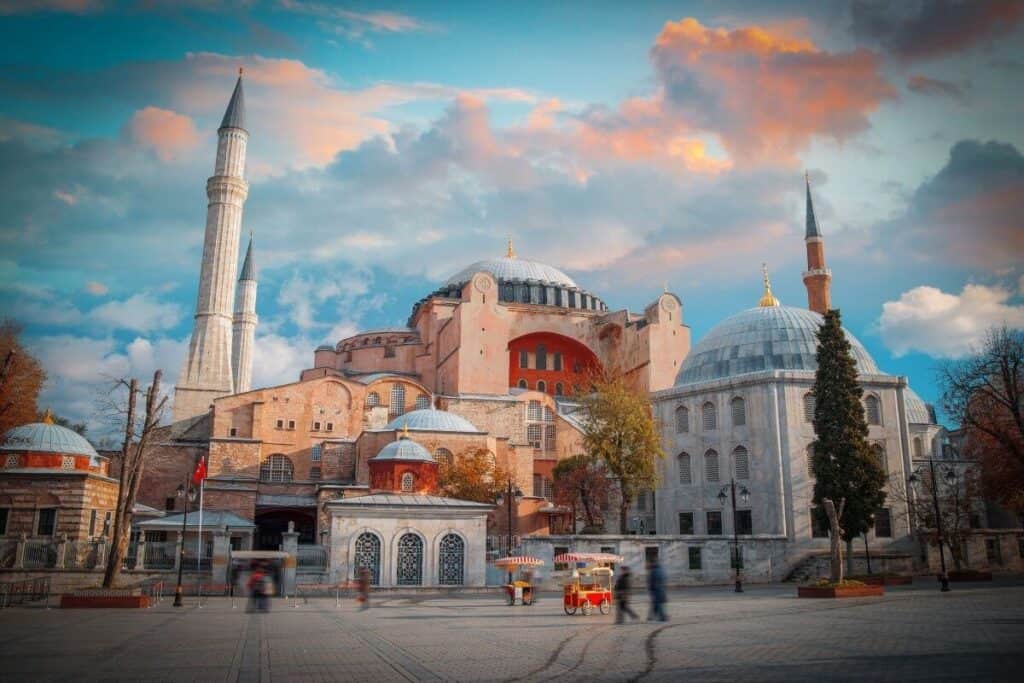
The architecture of the Hagia Sophia dates back to around 500AD when it was built on the site of a Roman Bathhouse. The architect was a Greek named Anthemius who designed the building and was the ruler of Constantinople at the time. Anthemius wanted to show off his work to his friends and neighbors so he built a structure so big that people from all over the world would come to admire it. As it stands today, the Hagia Sophia is the largest dome in the world and can accommodate up to 6,000 people.
Hagia Sophia is a remarkable example of how architecture can be used to communicate religious and cultural messages. By using architecture and its design elements, it can provide a way to understand the meaning behind it. In other words, architecture can be used as a form of communication. Hagia Sophia is a great example of how a building can convey a specific message. The building is very simple and straightforward in its overall design. Its only defining characteristic is that it is round.
The architecture of the Hagia Sophia is very unique. The dome covers the entire structure and sits on the top of the central narthex. The central narthex is in turn surrounded by a large colonnade. The central narthex and the columns of the colonnade are covered by a cupola. The cupola is crowned by a circular drum with a hole in the middle.
Hagia Sophia, The Cathedral Church Of The Divine Wisdom, was the largest and most important cathedral of the Byzantine Empire, and one of the great architectural achievements of the ancient world. Built-in the 4th century, the church was designed to be the focus of a major urban center. It was intended as a “royal” cathedral, dedicated to the memory of Emperor Constantine the Great, who had died while visiting the city in 337. A building of such magnitude required a vast and complex design, which was in turn based on the plans of the first Christian church built by Constantine, the Church of the Holy Apostles.
Conclusion: The 10 best architectures in the world that rich in design and culture
In conclusion, These ten architectures are all from different continents and they all stand out because of their unique style, design, and construction. What these architects have in common, however, is that they all have a strong passion for what they do. They use this passion to create a unique style that’s easy to identify.
Tag:


